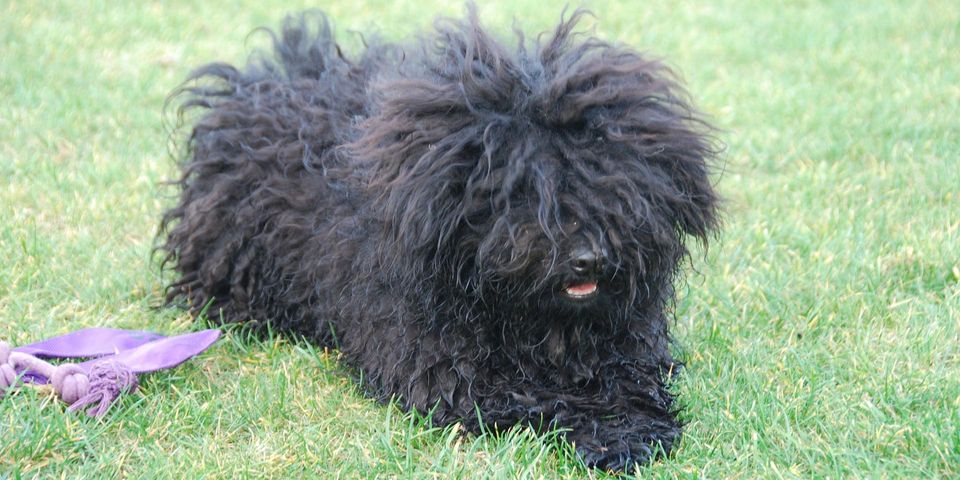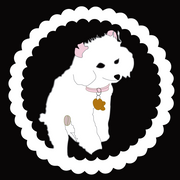
What makes a dog breed unique?
Have you owned, lived with, or met any of the dogs on our list? Which kinds of dogs who aren’t included here would you add?
We’ve selected 10 unique breeds to profile. They encompass a range of giant, standard, and small canine sizes from all around the globe. While some of them look like perfectly ordinary domestic dogs, novelty is not just a function of having an otherworldly appearance. Some of these dogs have remarkable talents, and still others make strange noises. Let’s take a closer look at some atypical dog breeds!
Unique dog breeds, A to Z:
- Bleu de Gascogne
- Carolina Dog
- Chinese Crested
- Komondor
- Kooikerhondje
- New Guinea Singing Dog
- Nova Scotia Duck Tolling Retriever
- Peruvian Inca Orchid
- Puli
- Rhodesian Ridgeback
- Xoloitzcuintl
Bleu de Gascogne (Basset, Grand, and Petit)
You may be able to discern, from the name, that the Bleus de Gascogne are dog breeds of French origin, from the region of Gascony in southwestern France. These dog breeds were developed as hunting dogs, specifically scent hounds. Your French may be a bit rusty, but the variants — “Basset,” “Grand,” and “Petit” — refer not to the size of each dog, but instead to the size of their intended quarry, and the “Bleu” to the dark ticks and patches on their coats. Their uniqueness lies in the fact that, popular as they were in past centuries, they are foundational to the development of many modern breeds, including the Bluetick Coonhound.
Carolina Dog
The most interesting thing about the Carolina Dog is that it originated right here in America, and yet was unknown and unclassified until the 1970s! Also called the American Dingo, it bears a striking physical resemblance to its Australasian cousin. These are grouped with pariah, primitive, and landrace dogs, meaning that they developed on their own in the wild, without human guidance or breeding programs.
Chinese Crested
Notable Chinese Crested dogs are recognizable by their hairless appearance. Nearly hairless, I should say, because the “crest” refers to the tufts of hair that adorn their heads, feet, and tails. Even “hairless” is a misnomer since some Chinese Cresteds have full coats. This variety is known as the Powderpuff, and looks a lot like a terrier, only with a narrower muzzle. The hairless variety requires careful attention to its skin health.
Komondor
You may actually be familiar with the Komondor, even if you don’t recognize its proper name. This is a giant dog breed, which looks like a lumbering mop. Its long, heavy, corded coat gives these dogs their distinctive look. Don’t worry about learning to braid; the fur tangles naturally as Komondorok age. The coat is multi-functional, providing these livestock guardian dogs with protection from inclement weather and acting as a kind of natural armor.
Kooikerhondje
Hailing from the Netherlands, the Kooikerhondje is one of two dog breeds on our list with a special, if not downright bizarre, talent. These are technically hunting dogs, though their skill is not in pursuit, treeing, or retrieving, but in trickery. Kooikerhondje are trained to lure ducks along docks, leading them into cages or traps known as kooien. They look like small red-and-white spaniels, and were frequently depicted in paintings by Dutch Masters such as Rembrandt.
New Guinea Singing Dog
With a name like that, it should be easy to tell what makes this breed of dog unique. Like the Carolina Dog described above, New Guinea Singing Dogs developed in almost total isolation from humans. Still extremely rare as pets, NGSDs — also called Hallstrom dogs, after the first person to study them in captivity — these dogs are capable of making a wide range of sounds beyond simple barks, howls, and whines. Their relative wildness means that they have sharper teeth, not dulled by domestication, and more flexible bodies than common household dogs.
Nova Scotia Duck Tolling Retriever
Like the Kooikerhondje, the Nova Scotia Duck Tolling Retriever is a hunting dog with particular skills in and around water. Energetic and trainable, the Tolling Retriever’s webbed feet make him an adept swimmer. Originally from the eastern coast of Canada, these dogs use their tails to attract the attention of ducks and other waterfowl. When the fowls are close, the hunter has a much easier chance to acquire the target.
Peruvian Inca Orchid
Similar to Chinese Crested dogs, Peruvian Inca Orchids are known among the cognoscenti as hairless dogs. Like the former breed, the Peruvian Hairless actually does have hair. Typically, it manifests as a sort of mohawk on otherwise hairless individuals, although there are also rare examples with full coats. Smart and friendly dogs, Peruvian Inca Orchid dogs love to play, but need special care taken of their exposed and sensitive skin.
Puli
Puli are small and agile herding dogs from Hungary. Puli share not only a country of origin with the Komondor, but a corded coat style as well. Where the Komondor’s normal function is guarding livestock, Puli are generally herding dogs. As with other heavy-coated dogs, eye health can be a concern as these dogs age.
Rhodesian Ridgeback
From modern-day Zimbabwe in Africa, the thing that’s truly unusual about Rhodesian Ridgebacks isn’t the line of raised fur along their spines that runs counter to the rest of their coats. I mean, yeah, that’s odd, but, in the past, puppies born without the trademark ridge were frequently culled for no other reason. Ridge or not, Rhodesian Ridgebacks are large, loyal dogs who respond best to positive training.
* Originally posted on Dogster
ABOUT MIA'S BATHHOUSE FOR PETS
Mia's Bathhouse for Pets is Harlem's premier self service dog wash and full service pet grooming salon! They are committed to bringing practical and affordable pet care services and education to the beloved Harlem and Upper NYC pet owner community.
About the Business
Have a question? Ask the experts!
Send your question

